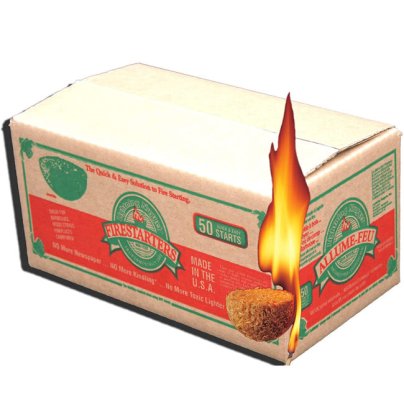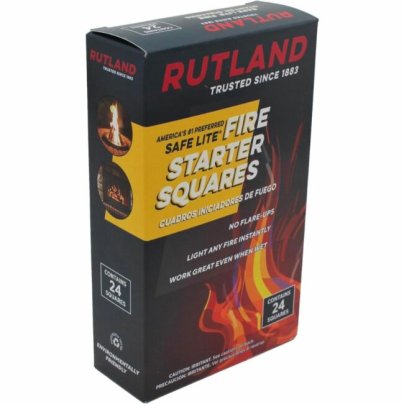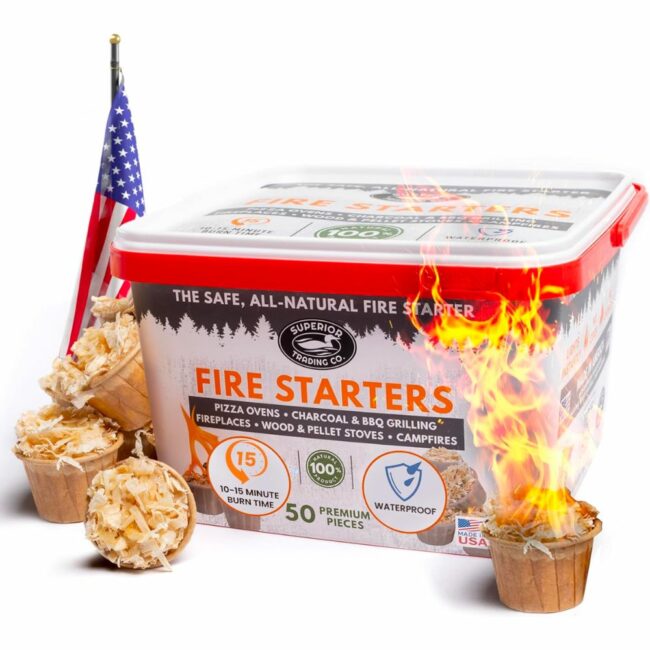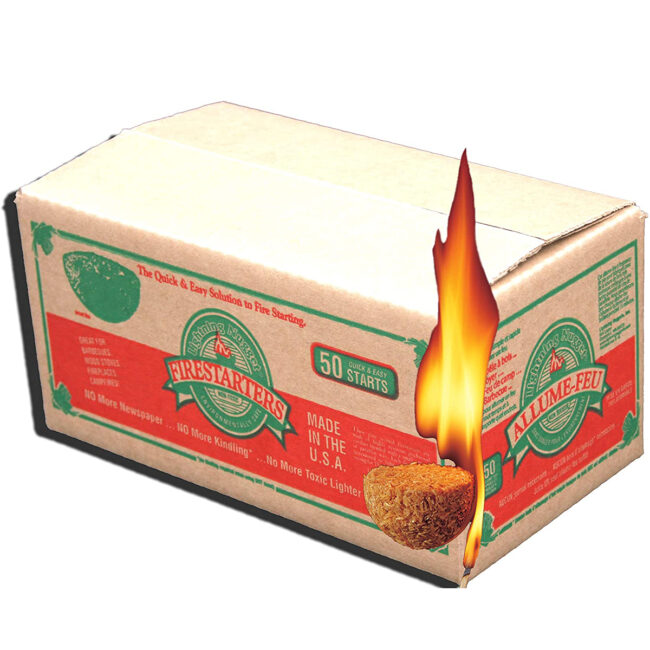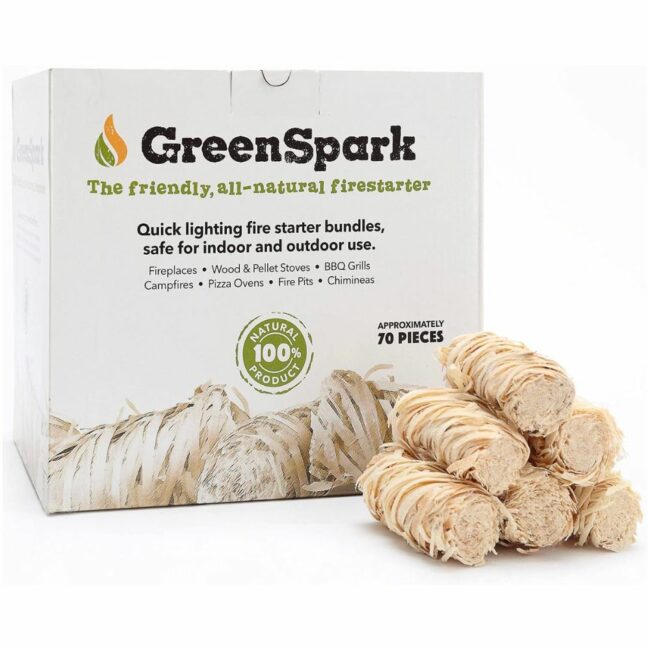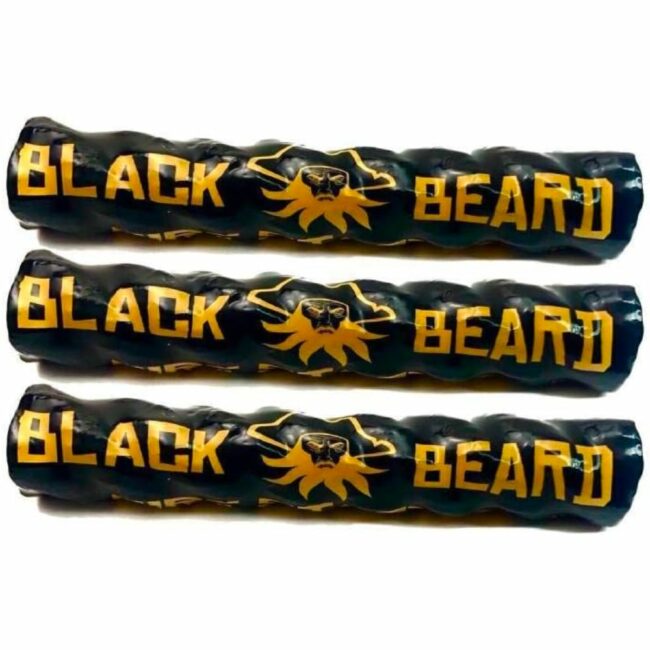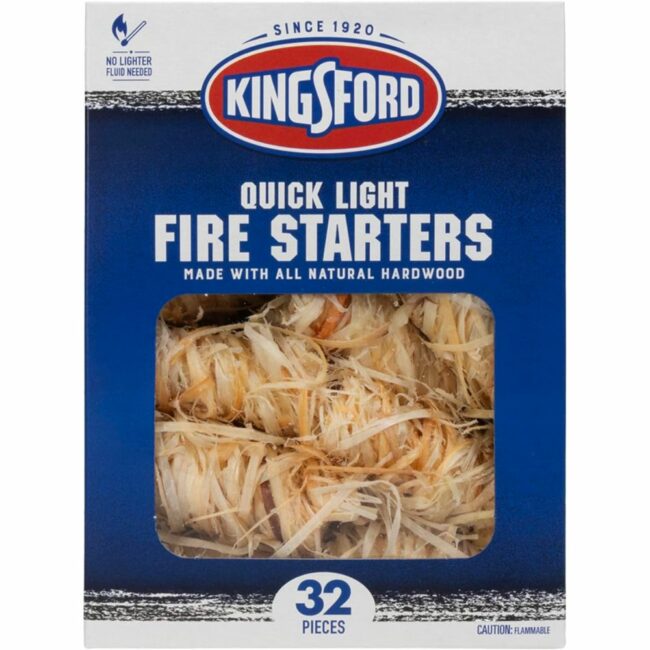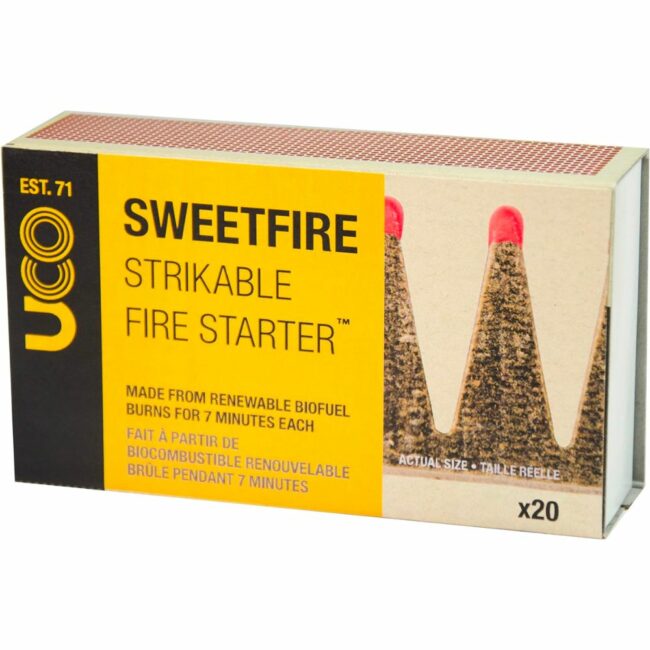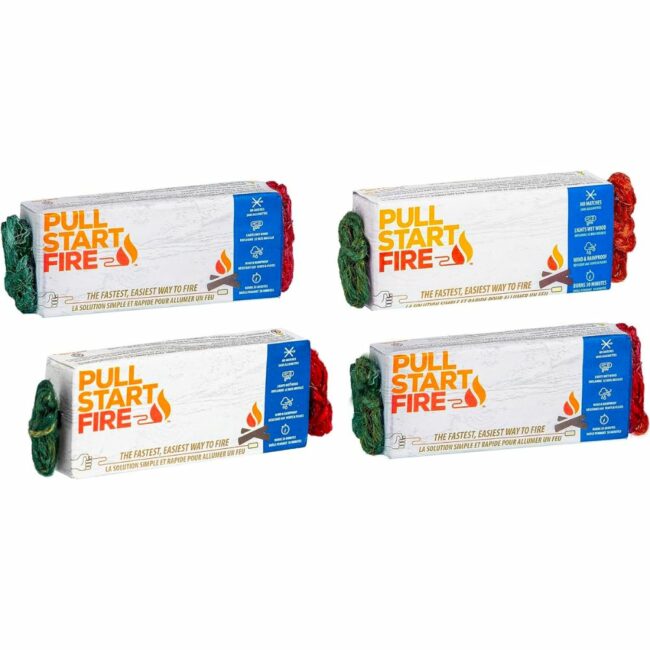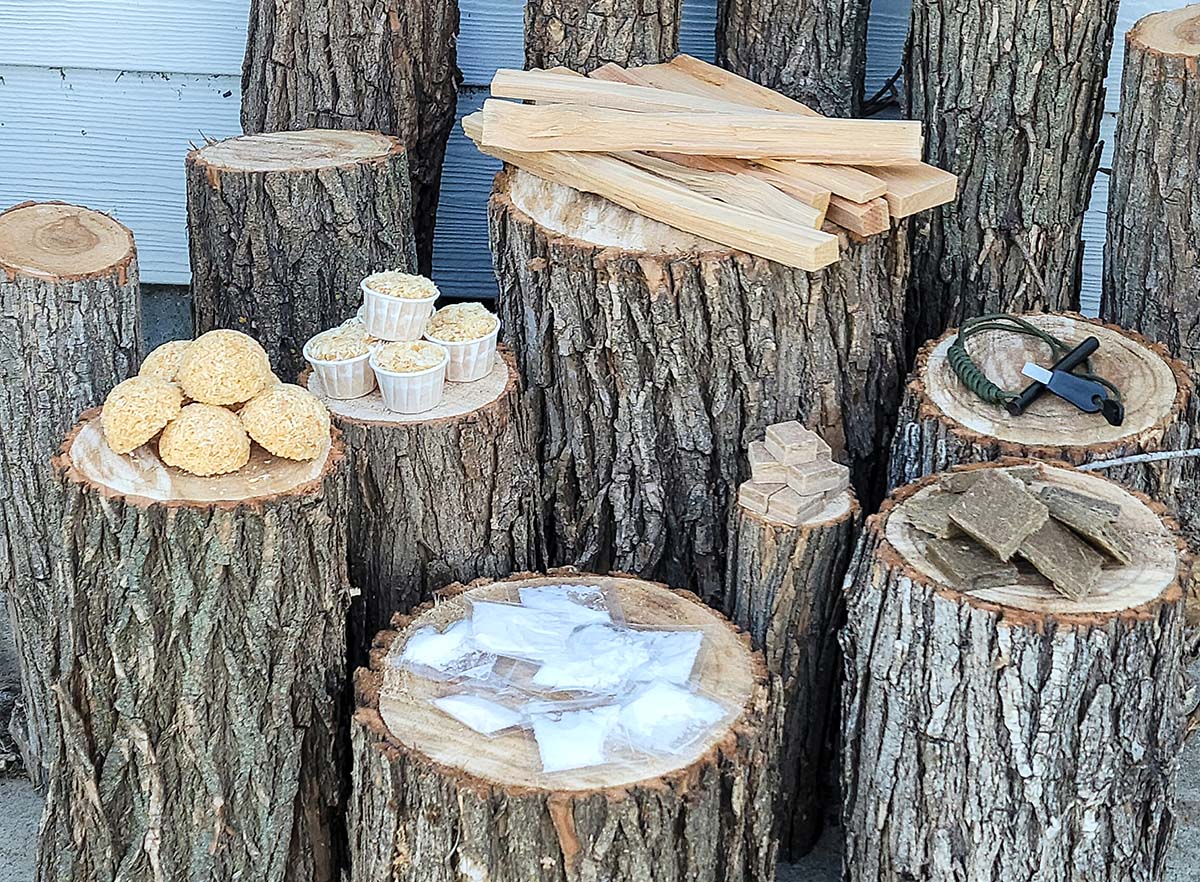
We may earn revenue from the products available on this page and participate in affiliate programs. Learn More ›
Fire starters make it easy for anyone to start a roaring fire. Rather than having to wrestle with damp wood or crumpled-up newspapers to get the first flames going, users can employ a fire starter to achieve this with a single match or the flick of a lighter. The catch is that they’re not all created equally.
Some fire starters stand out for their ability to help ignite a fire rapidly and effortlessly, while others are difficult to light or won’t stay lit long enough to ignite a wood fire. We wanted to know which ones were worth buying, so we tested them in our own fireplaces, chimineas, wood-burning stoves, and fire pits. Ahead, we’ll cover how the following products earned a place in our lineup of the best fire starters.
- BEST OVERALL: Superior Trading Co. All-Natural Fire Starter
- RUNNER-UP: Lightning Nuggets Fire-Starting Nuggets
- BEST BANG FOR THE BUCK: Rutland Safe Lite Fire Starter Squares
- BEST NATURAL: Better Wood Products Fatwood Fire Starter
- BEST FERRO ROD: Exotac FireRod XL Fire Starter
- BEST FOR FIREPLACE: GreenSpark Fire Starter Squares
- BEST FOR FIRE PIT: Black Beard Fire Starter Fire Sticks
- BEST FOR CHARCOAL GRILL: Kingsford Quick Light Fire Starters
- BEST FOR CAMPING: UCO Sweetfire Strikable Biofuel Fire Starter
- BEST FOR EMERGENCIES: Pull Start Fire Pull String Fire Starter
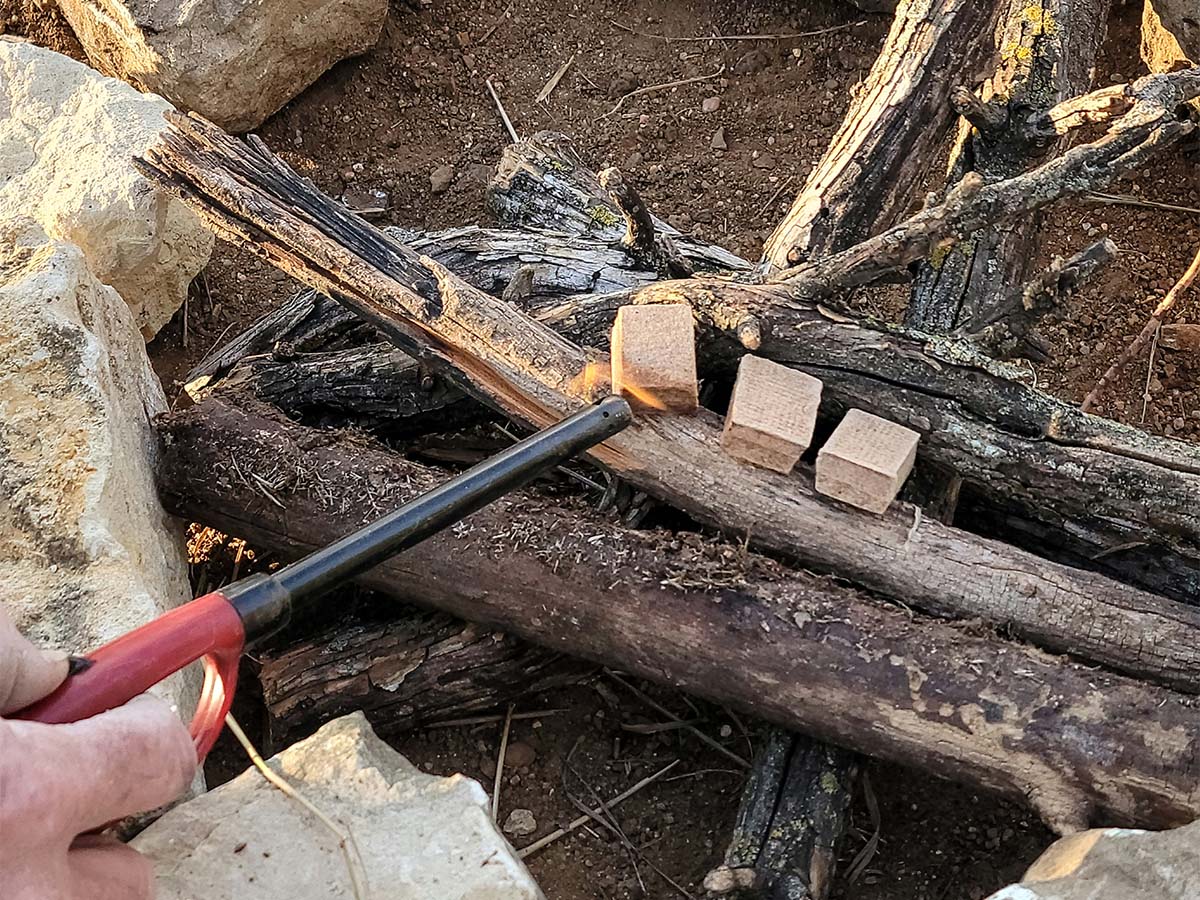
How We Tested the Best Fire Starters
We considered a variety of factors when deciding which fire starters to test. We selected starters that would burn long enough to ignite wood or charcoal without needing to add other burnable materials, such as wadded-up paper or cardboard. A fire starter should also be easy to use, so we chose options that light easily with a match or lighter—with the exception of the ferro rods we tested, which function a bit differently.
During our testing, we followed the manufacturers’ instructions, placing one or two fire starters as suggested and using them to start the recommended fire types. For many of the tests, we used a traditional fireplace, but we also used a fire pit, a chiminea, and a wood-burning stove if the directions recommended using the fire starters with those appliances. We also tested a few fire starters to see how well they worked for lighting charcoal—but only if they were listed as safe to use for grilling food.
If a fire starter was advertised as waterproof, we dropped it in a glass of water and then attempted to light it. We determined that many waterproof fire starters aren’t genuinely waterproof but rather water-resistant. In other words, they needed a little time to dry out before lighting.
We timed how long it took for a fire starter to catch fire from a match or lighter, how tall its flames were, and how long it burned before extinguishing. We discovered a fire starter needed to remain lit for 5 to 9 minutes, at minimum, to fully ignite the rest of the wood and logs in a fireplace.
The only fire starter we tested differently was the ferro rod, which is intended to ignite finely textured, highly flammable tinder via sparks. We tested it on cotton-fiber tinder that was included with the rod, and then we built up the fire with progressively larger twigs and kindling.
During the testing phase, we awarded points based on how well each fire starter performed the tasks. After testing, we added and averaged the scores and compared packaging, prices, dimensions, and other factors to categorize the products for different applications.
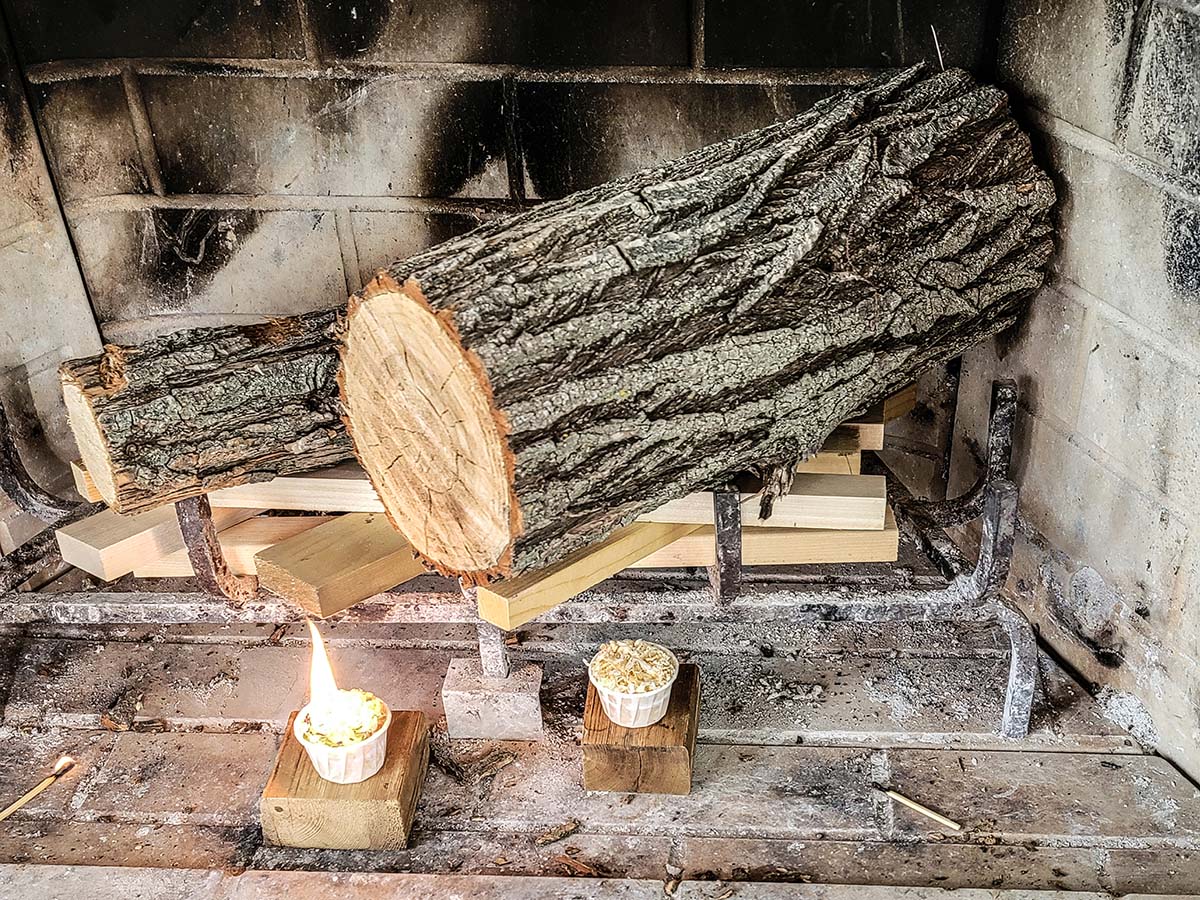
Our Top Picks
In total, we tested 15 different fire starters: 12 small accelerant products, and three ferro rods that could fit into a pocket on a camping or hiking trip. Our main goal was to determine which fire starters performed the best in their relative categories. We didn’t test matches or lighters, but we did use them to light the accelerant fire starters. Not every product we tested made the cut for this guide. Each of the products below earned a spot by being a top performer in our hands-on testing.
Best Overall
Superior Trading Co. All-Natural Fire Starter
Pros
- Made from natural materials, recycled sawdust, and food-grade wax
- Odorless and nontoxic, which is especially great for using them in grills where food is prepared
- Waterproof, but they need to dry out before use
Cons
- These are slightly more expensive than some of the other tested fire starters
- Some of the bagged pods may be crushed during packing or shipping
Product Specs
- Material: Wood shavings, wax
- Quantity: 50
- Burn time: 10 to 15 minutes
These Superior Trading Co. fire starters are safe, easy to use, and effective. We found that just one pod was typically all we needed to get a log fire lit and burning. Made from wood shavings and food-grade wax, the pods are odorless, nontoxic, and environmentally safe, making them ideal for everything from indoor fireplaces to camping bonfires.
It took about 4 seconds for the pod to catch fire when we lit it with a single match. It started burning slowly, but within 5 minutes, the flames were about 8 inches tall, and the pod continued burning for about 15 minutes, which was plenty of time for the logs to catch fire.
The manufacturer lists these fire starters as waterproof, so we dropped a couple in a glass of water before testing them. We couldn’t get them to light immediately, but that was understandable. Once they dried out, they lit quickly and burned well. We used them in a fireplace and a charcoal grill. We placed one Superior Trading Co. fire-starter pod under the charcoal basket in our grill and lit it. By the time the flame from the pod burned down, the charcoal was lit.
Get the Superior Trading Co. fire starters at Amazon or Superior Trading Co.
Runner-up
Lightning Nuggets Fire-Starting Nuggets
Pros
- Light pine scent offers pleasant aroma when lit
- 50 nuggets in 1 box for plenty of fires
- Made of natural wood and wax, so there is no worry about toxic chemical fumes
Cons
- Unsuitable for use in grills because of pine scent
- May require more than 1 match to light successfully
Product Specs
- Material: Sawdust, wax
- Quantity: 50
- Burn time: 15 minutes
Forget about newspapers and kindling—we were able to get a real wood fire going using just one small Lightning Nugget. It took three matches to light the nugget, but once lit, it burned brightly with a hot flame about 6 inches high for a little more than 10 minutes.
The nuggets are made from a blended composition of all-natural, recycled, and nontoxic flammable materials, including pitchwood sawdust and paraffin wax. Pitchwood is a type of pine that contains natural resins that are flammable.
When burned, these nuggets give off a slight pinewood scent, making them suitable for fireplaces and campfires. We were hoping for more of an aroma, but it was pretty weak. Each box comes with 50 nuggets, and since it takes just one nugget to light most fires, one box goes a long way. They’re not suitable for use in grills, however, since they are scented.
Get the Lightning Nuggets fire starters at Amazonor Tractor Supply Co.
Best Bang for the Buck
Rutland Safe Lite Fire Starter Squares
Pros
- Lights quickly with just a single match
- Burns for up to 10 minutes, which is typically long enough to ignite most log fires
- Made from natural and nontoxic ingredients, so they can be used in grills to cook food
Cons
- The squares have a shorter burn time than some other tested fire starters
Product Specs
- Material: Recycled wood chips, paper fiber, wax
- Quantity: 24
- Burn time: 10 minutes
Buyers don’t have to spend a lot to get quality fire starters. With 24 fire starter squares in a box, this option from Rutland is one of the more affordable fire-starting options.
We placed a couple of Rutland fire starter squares beneath logs in our fireplace. They lit quickly—within 1 or 2 seconds of touching them with a lit match. The flames rapidly engulfed the squares and continued burning for about 8 minutes, which was more than enough time to ignite the logs in the fireplace.
The fire starter squares are made from recycled wood chips, paper fiber, and wax. Although the manufacturer claims they’ll light when wet, we couldn’t get them to light after we dropped them in a glass of water and then took them out. After about 15 minutes, however, they were dry enough to light.
These are nontoxic fire starters, and we couldn’t detect any odor as they burned, making them suitable for starting charcoal fires for grilling food. It took two Rutland squares to get the charcoal in our grill started; the first one burned out before the charcoal caught, so we slipped a second one under the charcoal basket and lit it. The briquettes caught fire a few minutes after that.
Get the Rutland fire starters at Amazon, Ace Hardware, or Tractor Supply Co.
Best Natural
Better Wood Products Fatwood Fire Starter
Pros
- Fatwood is an all-natural, unprocessed product that would otherwise be wasted
- Naturally waterproof without added protection or preservatives
- Lights easily, produces high heat and flame, and burns for a long time
- Use 2 or 1 or even just a partial piece to start a fire, depending on conditions
Cons
- Produces a large amount of smoke, especially during the first few minutes
- The smoke and smell are very pungent
Product Specs
- Material: Seasoned pine fatwood
- Quantity: 10 pounds, about 160 pieces
- Burn time: 14 minutes
Nature offers excellent fire starters, but gathering traditional materials such as birch bark, tinder fungus, or cattail fluff is not always practical. One of the best natural fire starters, fatwood, comes from naturally resin-saturated pinewood. These fatwood fire starter sticks from Better Wood Products catch fire quickly, even when wet, and burn longer and hotter than factory-made fire starters. Our 10-pound bundle of fatwood contained 160 sticks, each measuring 8.25 inches long and about .5 inches in diameter.
After submerging two sticks in a bucket of water for 5 minutes, we pulled them out, shook off the water, and held a lit match against them. Within 5 seconds, both sticks were ablaze like giant matchsticks. They appeared to burn more intensely than typical wood shavings or compressed fiber and wax fire starters. Compared with those, these fatwood starters produced a larger flame with more heat—enough that we could feel it from 3 feet away. We were also impressed by the 14-minute burn time, but the downside was an excessive amount of smoke and pungent pine aroma.
Possibly the most intriguing quality of a fatwood fire starter is its versatility. The seller recommends lighting two sticks at a time with a match as an easy way to get a fire going with dry, seasoned firewood. We experimented with smaller amounts and managed to start one with just half a stick. Another time, we made a nest of fine fatwood shavings and lit it with sparks off of the ferro rod. However you light it, this stuff just works.
Get the Better Wood Products fire starters at Amazon.
Best Ferro Rod
Exotac FireRod XL Fire Starter
Pros
- Large, high-quality ferro rod produces a lot of sparks
- Threaded ferro rod can be removed from the handle and replaced if needed
- Aluminum handle features a waterproof chamber that holds cotton tinder
- Perfect size to fit in a ferro rod loop on a knife sheath
Cons
- The premium price may be a deal-breaker for thrifty shoppers who can use a simpler option
Product Specs
- Material: Ferro rod with aluminum handle
- Quantity: 1
- Burn time: Not applicable
Getting back to basics by creating a fire with friction no longer means using flint and steel; today’s outdoors enthusiasts trust ferrocerium alloy to supply the sparks. In skilled hands, a quality ferro rod and some dry tinder are all it takes to build up a roaring fire in no time. We preferred the Exotac FireRod XL over competing models, not least because of the massive shower of sparks it produced. We also appreciated its precision-machined aluminum handle with a watertight tinder chamber and the fact that the rod can be unthreaded from the body and replaced with a new one if needed. It did not come with a striker, but the spine of a fixed blade or lock-back folding knife served that role perfectly.
Before the ferro rod could make sparks, we had to scrape away some of the black surface coating. We then dropped it in the water bucket to find out if the tinder chamber was truly watertight. It was. Next, we dried our hands, opened the tinder chamber, and pulled out one of the three included cotton fiber tinder pieces. We loosened the fibers and placed the tinder in a bundle of dry pine needles shaped like a bird’s nest. The very first strike sparked into the tinder and ignited it, which then lit the pine needle nest. We built the fire up with kindling from there.
We’ve tried smaller ferro rods, such as Coghlan’s Fire-in-a-Box and the spring-loaded UST BlastMatch. The FireRod XL’s large rod and chunky handle made it easier to use with gloves, and it produced a larger spark shower to light the tinder. Three of the six fires we started with the FireRod XL only required a single strike. We also appreciated the built-in waterproof tinder chamber inside the handle, as this allowed it to serve as a complete fire-making kit at all times. On the downside, the precision-machined aluminum handle seems to be a costly addition, as the price was multiple times more than that of a similarly sized drilled ferro rod on a lanyard.
Get the Exotac fire starter at Amazon, Target, or Exotac.
Best For Fireplace
GreenSpark Fire Starter Squares
Pros
- Comes in packs of 70, 140, or 400 squares, enough to start multiple wood fires
- All-natural and recycled ingredients make these fire starters an eco-friendly choice
- The GreenSpark fire starter squares light quickly and burn for 8 to 9 minutes
Cons
- The squares require about 10 minutes to dry after getting wet before they will light easily
Product Specs
- Material: Pinewood, wax
- Quantity: 70
- Burn time: 8 to 10 minutes
These all-natural fire starters blend recycled pine “wood wool” (which is a fancy way of saying slivers of wood cut from logs) and stearin wax (a wax made from plant and animal materials) with no added chemicals. That makes GreenSpark’s fire starters a clean and eco-friendly way to get a fire going. We tested them to start a campfire and to create a traditional log fire in the fireplace.
To get the campfire going, we placed three GreenSpark fire starter squares on top of some small logs and lit them with a lighter. It took 3 or 4 seconds for the starters to catch. Once they were burning well, we added some small pieces of kindling and more logs. The GreenSpark squares sent up flames about 6 inches high and burned for around 8 to 9 minutes. That was plenty of time to ignite the larger logs we put on the fire.
The test in the fireplace had similar results, and we enjoyed a roaring fire there. These fire starters are billed as waterproof, so we dropped them in a glass of water and then retrieved them. We couldn’t light them immediately after we took them out of the water, but as soon as the moisture on the surface dissipated—which took about 10 minutes—we were able to light them again.
They contain all-natural ingredients, so the GreenSpark squares are also suitable for use in grills for cooking food.
Get the GreenSpark fire starters at Amazon.
Best for Fire Pit
Black Beard Fire Starter Fire Sticks
Pros
- Completely weatherproof, even without the plastic label wrap
- Durable waxed fire rope holds up well in storage without crumbling, melting, or smearing
- Can be cut into small pieces to maximize the fire-starting potential of each stick
- Extended burn time of up to 4 hours per stick
Cons
- According to the label, this product should not be used indoors, as in a fireplace or woodstove
Product Specs
- Material: Cotton, wax, oil
- Quantity: 3
- Burn time: 4 hours
Nothing lifts the mood in camp faster than a roaring campfire. Black Beard’s fire starter “ropes” are ideal for fire pits because they can be stored indefinitely, are completely weatherproof, and offer enough burn time to coax even wet firewood ablaze.
We tested a three-pack of “ropes” (which is how these come packaged) using several methods, and while a lighter and matches were the most straightforward approach, we also had success using the ferro rod. For our timed test, we cut a 1-inch section from one rope, lit an end, and stood it up like a little candle. It burned strong for 11 minutes.
Next, we cut another piece of the same size, dunked it in a bucket of water for a minute, shook it off, and lodged it beneath a mix of damp, seasoned kindling and greenwood logs that had recently been cut. Success. The residual water sizzled on the fire starter for a few moments as it began to burn. Within 5 minutes the kindling directly above the fire starter had dried and begun to catch fire. After 10 minutes, the kindling was well lit, the greenwood logs were beginning to char and smoke, and we had enough of a fire to build on.
The resulting fire was very smoky—not because of the Black Beard fire starter, but rather because of the uncured firewood. We performed this experiment to find out if the fire starter produced adequate heat long enough to actually dry out damp wood in the bottom of a damp fire pit, and it did.
Get the Black Beard fire starters at Amazon, Walmart, or Black Beard.
Best for Charcoal Grill
Kingsford Quick Light Fire Starters
Pros
- Lit immediately after submerging in water
- Made of wood shavings and paraffin wax that produce no smell when burning
- One of the safest and most effective fire starters for starting charcoal or building cooking fires
Cons
- The flimsy packaging did not survive shipping intact, so we stored the fire starters in a zipper bag
Product Specs
- Material: Wood, paraffin wax
- Quantity: 32
- Burn time: 10 minutes
When charcoal chimneys first became popular, newspapers were much more widely read—and sometimes, burned. Those who get their news online and don’t want to start the barbecue with a trash fire will be glad to learn about these quick-light fire starters from Kingsford. These simple bundles of wood shavings and paraffin wax light easily, burn for a long time, and won’t pollute food fires with questionable chemicals.
When it comes to grilling, Kingsford has been a household name for a long time, so we weren’t surprised that its hardwood fire starters ended up being one of the top performers. The average burn time with these was an impressive 13 minutes. Even after we dunked them in water, they lit within seconds and burned hot once ignited. We only needed one fire starter to get the fire going in our charcoal chimney, but some folks who are less patient may prefer to use two or three.
With an average cost of about $0.31 per fire starter ($9.99 for a pack of 32), this was one of the most affordable options. The only complaint we had was that the packaging fell apart in transit while the fire starters were being shipped to us, so we had to store them in our own plastic zipper bag.
Get the Kingsford fire starters at Amazon, The Home Depot, or Walmart.
Best for Camping
UCO Sweetfire Strikable Biofuel Fire Starter
Pros
- Made with renewable biofuel sourced from sugarcane waste
- Easy and intuitive to use; just strike on the side of the box like a match
- Good burn time for the size, averaging about 10 minutes in our tests
- Compact packaging, with half of the fire starters sealed separately for added protection
Cons
- Strike-on-box only; the on-box striker is susceptible to moisture damage without added protection
- Box is too bulky and heavy, not practical for backpacking
Product Specs
- Material: Sugarcane fiber, wax
- Quantity: 20
- Burn time: 7 minutes
When it comes to fire starters for camping, ease of use, weather resistance, and burn time are critical factors. Compact packaging is also important. UCO’s Sweetfire fire starters combine the easy strike-starting of a match with the burn time of a waxed fiber fire starter. They come in boxes of 20.
Using this fire starter was just like using a match. We slid open the box, tore off one of the fire starters, and struck it on the side of the box. The “match head” was about four times the size of a conventional match, so it provided more than enough of a flame to get started. The individual fire starters measure 1 inch wide at the base, 2 inches from base to tip, and .5 inches thick—relatively small compared to the competition.
The burn time was pretty good at just under 10 minutes. That was more than enough time to start a fire under ideal conditions, and it worked fine in damp, drizzly conditions as well. It also performed well in our dunk test, starting on the first strike after a 5-second submersion. However, we suspect that the box with the built-in strikers could be a weak link if it absorbs too much moisture. This is a great choice for camp, but be sure to pack them in a zipper bag just in case.
Get the UCO fire starters at Amazon, Public Lands, or Gear.com.
Best for Emergencies
Pull Start Fire Pull String Fire Starter
Pros
- Extremely easy to use in all kinds of weather or any situation, even with gloved hands
- Approximately 30 minutes of burn time to dry out and ignite wet firewood
- Made of 89 percent recycled materials (specific ingredients are proprietary)
- Indefinite shelf life makes this an ideal addition to emergency preparedness kits
Cons
- Significantly more expensive than traditional fire starters; cost may not be sustainable for frequent use
Product Specs
- Material: Proprietary blend, 89 percent recycled materials
- Quantity: 3
- Burn time: 30 minutes
When the unexpected happens, a little preparation can make the difference between a rough day and an absolute disaster. Pull Start Fire was designed to start and burn for 30 minutes in all kinds of weather, and it can be lit without matches, lighters, or other devices. Just unwrap it, remove a tab, anchor it to a log, and pull a string. We’ve tried it, and it really was that simple.
This was by far the most expensive fire starter we tested on a per-fire basis. But it was also the easiest to operate in difficult conditions, such as one-handed, with hands in gloves, in high winds and rain, and so on. Each Pull Start Fire was sealed individually and, according to the manufacturer, has an indefinite shelf life. We held it underwater for 60 seconds and the cellophane wrapper didn’t leak. Then we opened the wrapper and followed the directions to start the fire.
This fire starter burns aggressively at first, like a roadside emergency flare, until the materials inside the inner packaging catch fire. In our test, it burned for 32 minutes with no additional fuel. On the second try, we placed it beneath a pile of moist but moderately cured 3-inch-thick firewood logs with no kindling. As the Pull Start Fire burned, it dried the wood directly above it. Within 10 minutes some of the damp logs began to burn, and after 20 minutes they were well engulfed. Bottom line, if we were the character in Jack London’s story To Build a Fire, we would rather have a couple of Pull Start Fires than a pack of matches.
Get the Pull Start Fire fire starters at Amazon, Lowe’s, or Lehman’s.
DIY Your Own Fire Starter
The fire starters that earned a spot in our lineup are all relatively inexpensive, and most are made from natural ingredients. For those who want something that not only ignites and burns reliably but looks good, too, consider making pine cone fire starters.
Making pine cone starters is fairly simple. It requires melting beeswax in the top of a double boiler and then dipping the cones two or three times until they have a nice wax layer. For fun, try rolling them in Epsom salt after the final dip while they’re still warm to lend them a frosty look. For scented pine cone fire starters, add natural essential oils to the melted wax, such as pine or cinnamon.
Jump to Our Top Picks
What to Consider When Choosing a Fire Starter
Aside from considering the various types of fire starters, there are other features that shoppers will want to consider, such as ease of use and convenience. While any fire starter will make starting a fire easier than using tinder, not all fire starters are suitable for all types of fires.
Types of Fire Starters
In general, fire starters fall into two camps: flame/spark producers or accelerants. Shoppers already know about lighters and matches, but they might not be familiar with other types of flame/spark producers, such as ferro rods.
Accelerants are usually what buyers are usually looking for when shopping for fire starters, and these products are used in conjunction with typical fire-building materials, such as seasoned logs. An accelerant fire starter is placed beneath the other materials and then ignited with a match, lighter, ferro rod, or other flame/spark producers. Here’s the rundown on all of them.
Lighter
A lighter consists of a metal or plastic container filled with a flammable liquid or compressed gas. A lighter lights by simultaneously creating a spark with the flint wheel while releasing a controlled amount of the fuel with a button. Unlike other methods, a lighter creates an actual flame, making it significantly easier to start a fire.
Matches
Matches are the tried-and-true method of starting a fire. Like a lighter, a match creates an actual flame rather than a spark, making it an easier way to start a fire. However, many matches are susceptible to water damage.
Ferro Rods
A ferro rod is a pencil-shaped piece of ferrocerium alloy. When a steel or carbide striker is scraped or struck against the rod, tiny shavings of ferrocerium oxidize and ignite as a result of the friction, burning at a high temperature of more than 5,000 degrees Fahrenheit.
Flint and Steel
Flint and steel consist of a steel striker and a piece of natural flint. When the two are struck together, they produce heated pieces of steel in the form of sparks that ignite a piece of cloth or tinder, starting the fire.
Magnesium
A magnesium fire starter typically consists of a small block of soft magnesium with a ferro rod embedded into one edge. The magnesium, which burns at an intense 2,500 degrees Fahrenheit, is an accelerant that works with the tinder to quickly build a fire. With a knife or the striker that came with the kit, scrape a quarter-size pile of magnesium into the tinder pile, then use the embedded ferro rod and striker to light the tinder. This will ignite the magnesium fragments, which will help set fire to twigs and kindling.
Accelerants
Accelerants are the most popular fire-starter products, and we tested a number of these. Nuggets and squares consisting of flammable oils, wax, and recycled paper and wood are the easiest to use; however, they require a flame ignition source, such as a match or a lighter. Once lit, these fire starters typically create tall, hot flames that light the materials above them.
Size and Convenience
As handy as fire starters may be, their usefulness is, to a degree, dependent on their convenience. Look for fire starters that are lightweight and compact, ranging from 1 to 6 inches in length. Typically sold in cases of 12 or 24, these pocket-size pouches, pods, or cubes can be stored in plain sight or easily tucked out of sight. Small, lightweight, neatly packed products are also more portable.
Reliability in Inclement Weather
Most fire starters consist of wax, oil, and dense recycled wood, which holds up well in wet weather. Some fire starters are waterproof—drop a ferro rod in water, for example, and it won’t be affected. Just dry it off and it will still throw a spark that can ignite dry material. Fire starters also tend to burn at high temperatures of 800 degrees Fahrenheit or more, which allows them to better withstand windy and damp conditions.
Burn Time
Fire starters are meant to simplify the sometimes painstaking process of starting a fire by providing a persistent flame that can ignite nearby kindling. To do so, the fire starter must burn long enough to establish the fire. The longer the burn time, the more likely users can achieve a robust blaze. Our tests determined that most burn for an average of 3 to 15 minutes.
Smell
Earlier types of fire starters were typically infused with flammable compounds, which gave them a chemical smell. But the best fire starters in this day and age are nearly odorless. Many people appreciate the less noxious types of fire starters. However, fire starters that contain natural essential oils can lend a pleasing scent to the product that enhances the user’s experience without being toxic.
Sustainability
The best fire starters tend to be made of environmentally friendly materials, be it wood waste (sawdust or shavings), natural nontoxic wax, recycled paper, or waste textile fibers. Using fire starters typically results in faster and more complete ignition, which reduces airborne soot and smoke. Don’t miss our DIY fire-starter option above to find out how to make eco-friendly fire-starting accelerants from pine cones and beeswax.
FAQs
A key to using a fire starter effectively is understanding how to arrange logs and kindling for the fire. Ahead, learn about how to build a fire correctly and use a fire starter to light it quickly.
Q. How do I use a fire starter?
To use a fire starter, begin by setting up your wood. If building a wood fire, you’ll need some kindling, which will ignite more quickly than full-size logs. Place the fire starter under the kindling or charcoal, leaving room so that you can reach the fire starter with a match or lighter. Light the fire starter and wait as it begins to burn and ignite the kindling.
Q. How do I start a fire in a fire pit?
To start a fire in a fire pit, gather wood, kindling, and a fire starter. Stack small pieces of kindling on top of one another, about four layers high, until you’ve formed a shape resembling a log cabin. Place the fire starter in the middle of your log cabin, pile kindling loosely in the middle, and then light the fire starter.
Q. How do I start a fire in a fireplace?
Begin by placing a layer of kindling and two or three small pieces of firewood on the fireplace grate, then place your fire starter in the space beneath the grate. Lighting the fire starter will ignite the kindling above it, which will, in turn, ignite the logs. Add larger logs as needed to keep the fire burning.
Q. Do fire starters expire?
Fire starters are made up of materials that include recycled wood fibers, paper, oil, and wax that do not expire; hence, most fire starters do not have a shelf life. They may be attractive to insects, rodents, or other pests, so it is best to store them in airtight containers. Also, since heat may degrade the waxes and oils that are often used in these products, be sure to store them away from excessive heat.
Meet the Testers
Glenda Taylor is a product tester and writer specializing in the construction, remodeling, and real estate industries. She and her husband own a general contracting company, and Taylor is experienced in both residential and commercial building applications. She tests a wide range of power tools as well as other home improvement, household, and lawn-and-garden products.
Mark Wolfe is a writer with an extensive background in the green industry and an avid DIYer who lives in a 50-year-old home. When he isn’t writing, he spends his time upgrading, repairing, and replacing anything and everything in his home, yard, and garden. He tests and writes reviews about hand tools, lawn-care and home-repair products, and outdoor-living goods
Additional research provided by Tony Carrick and Donna Boyle Schwartz.

